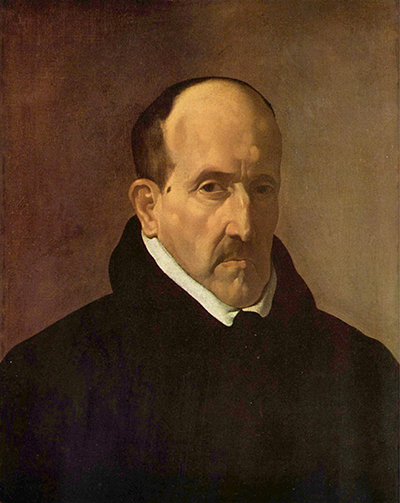The portrait of Portrait of Don Luis de Góngora by Diego Velazquez is another example of the clear influence of Italian art on his technical approach
To simplify this argument you could point to the lighting as that of Caravaggio and the palette of Titian. These were two significant influences on Velazquez, that cannot be doubted, and part of the reason for that was the early teachings of Pacheco - a Spanish artist sold on the virtues of the Italian Renaissance.
It was Francisco Pacheco who was key to arranging this commission as he attempted to promote his young prodigy. You will see clear similarities between this painting and Velazquez's portrait of his early tutor, with the two paintings coming around the same time. Velazquez would later develop as an artist and his work would start to lose its signs of influence from Pacheco.
There are several similar paintings to this portrait from around this period, but none have been confidently attributed as yet. They may have been follow up pieces by Velazquez himself, but are more likely to have been study paintings by related artists who were looking to learn from the master himself.
This portrait painting from 1622 can be found at the Museum of Fine Arts in Boston, USA. This impressive museum also holds other famous artworks such as The Daughters of Edward Darley Boit by John Singer Sargent, The Fog Warning by Winslow Homer as well as several artworks by the likes of Rembrandt, Dante Gabriel Rossetti, William Turner, Edouard Manet and Francisco de Goya.
Velazquez's style in this early portrait was relatively conservative, using very little detail in the background or even on the subject's clothing. As the artist was to develop over time artistically, so would his confidence. You can compare this portrait to his masterpiece, Las Meninas, to see how the levels of detail would advance so substantially.




